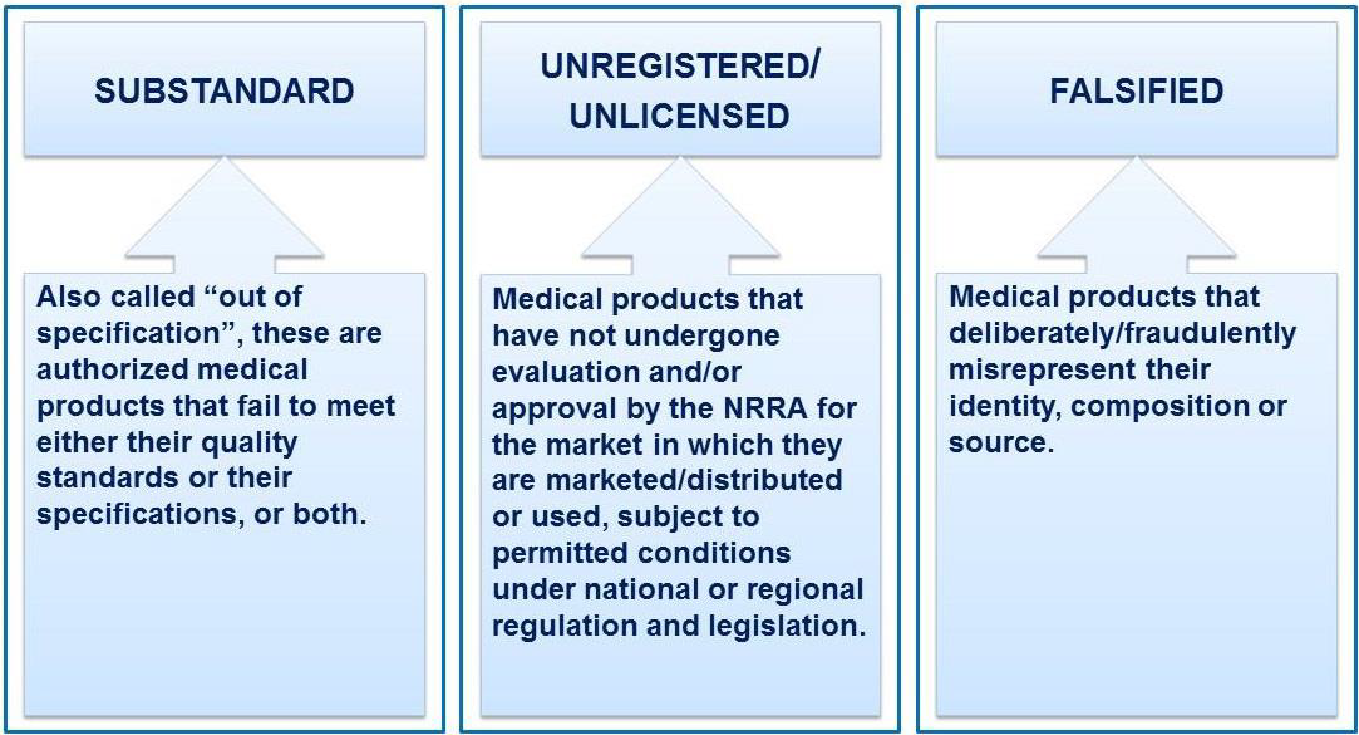In 2017, after years of deliberations, the World Health Assembly adopted the following definitions of falsified medical products: they are "medical products that deliberately/fraudulently misrepresent their identity, composition or source. [...] The deliberate or fraudulent misrepresentation refers to any substitution, adulteration, reproduction of an authorized medical product or the manufacture of a medical product that is not an authorized product" (WHO Member State Mechanism on Substandard/Spurious/ Falsely-labelled/Falsified/ Counterfeit Medical Products; 2017).
Although the definition of falsified medical products includes the term "identity," intellectual property rights are excluded from the protection and reach of such a definition. "Identity" in this context refers instead to the name, labelling or packaging or to documents that support the authenticity of an authorized medical product.
Member States also sought to highlight the characteristics of medical products that are not falsified, but are either substandard or unregistered/unlicensed. Substandard medical products are also called out-of-specification products. These medical products fail to meet either their quality standards or their specifications, or both. Unregistered or unlicensed medical products are those that have not undergone evaluation and/or approval by the national or regional regulatory authority for the market in which they are marketed, distributed or used, subject to permitted conditions under national or regional regulation and legislation.
The figure below summarizes the classification of falsified, substandard and unregistered/unlicensed medical products used by the WHO Global Surveillance and Monitoring System as well as the Member State Mechanism:

According to WHO and their Global Surveillance and Monitoring System for substandard and falsified medical products, the types of products that are falsified include malaria medicines, antibiotics, lifestyle products, including products for cosmetic use, erectile dysfunction, bodybuilding and dieting, anaesthetics and painkillers, cancer medicines, heart medicine, mental health medicine, vaccines, diabetes medicine and more. Both innovator medical products and generics are falsified. The falsified products are also not confined to high-value medicines or well-known brand names.
It is nearly impossible to estimate the true level of substandard and falsified medical products globally. According to a WHO study, the observed failure rate of substandard and falsified medical products in low and middle-income countries is approximately 10,5 %. In other words, in low and middle-income countries, 1 in 10 medical products is either falsified or substandard. The value of this market is estimated at US$ 30 billion (WHO, 2017).
Falsified medical products represent a significant public health threat. They fail to cure diseases of patients who often do not realise the reason for their deteriorating condition. Toxicity in falsified medical products can potentially cause greater harm to patients or even kill them. In addition, as a consequence of falsified medical products, drug resistance progresses.
Falsified medical products also have a socioeconomic impact as a large number of users often buy them because they have not access to safe medical products, for instance because they cannot afford them. Patients who consume falsified medical products lose faith in medicine and, often, the health system in general. Moreover, falsified medical products result in economic loss. Medicines that fail to protect or cure patients strain the budgets of households and health systems. Legitimate manufacturers of both generic and innovator pharmaceutical products suffer both from a financial and reputational point of view.
While attention has been focused on the health and regulatory aspect of this problem, far less has been given to the issue from a criminal justice perspective. As with other forms of crime, organized criminal groups abuse gaps in national and international legal frameworks, lack of resources of regulatory, enforcement and criminal justice officials, as well as difficulties in international cooperation. At the same time, as it continues to be difficult to identify falsified medical products, the prospect of the comparatively low risk of detection and prosecution in relation to the potential income makes the manufacturing and trafficking in falsified medical products an attractive commodity to organized criminal groups.
Prevention of falsified medical products is another area of work that is often overlooked. Prevention would include awareness raising on the risks of falsified medical products, as well as on how to avoid and spot them. In the heart of the matter lies lack of access to safe, affordable and quality medical products, which is at the very core of public health's interests. The adoption of a definition through the World Health Assembly is an encouraging step towards more action to prevent and combat the manufacturing and trafficking in falsified medical products.
In a similar spirit, in 2019 UNODC launched a new Guide to Good Legislative Practices to combat falsified medical products-related crime with a view to assisting Member States in building capacity to disrupt and dismantle the organized criminal networks engaged in all stages of the illicit supply chain, in particular distribution and trafficking (UNODC, 2019).